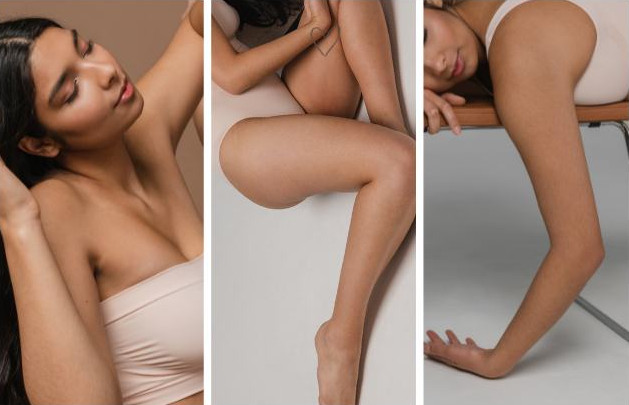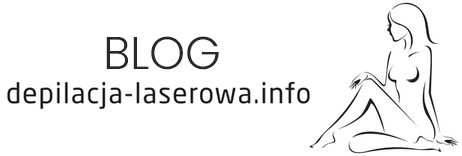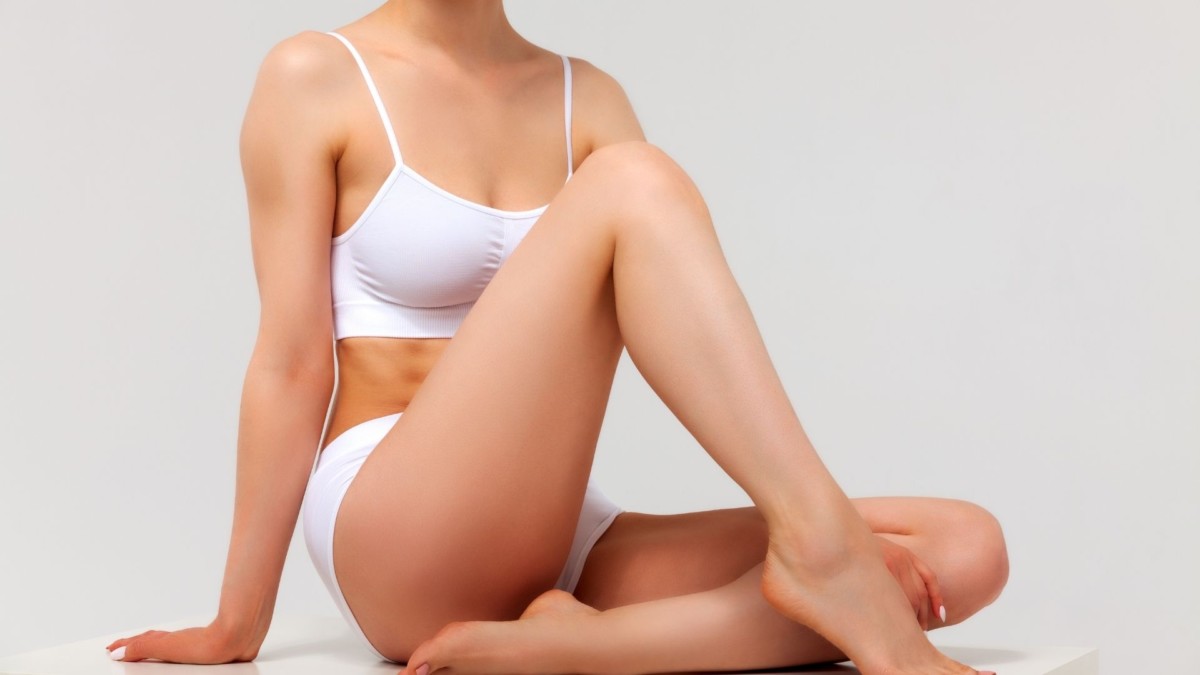Pubic hair removal is nowadays a fairly controversial topic. It is because hair removal from intimate spaces is an individual decision based on one’s own beliefs and comfort. What methods of pubic hair removal are there and what are their main characteristics? Here are a few hints.
Intimate hair removal
We can remove pubic hair to a large extent on our own by using traditional means, such as a razor, hair removal cream, wax, wax strips applied cold or an epilator. These methods help our bikini skin stay smooth and most often become part of our daily self-care routine.
We must stress, however, that each of the methods mentioned above has its own characteristic features.
1. Razor
Shaving with a razor is above all a quick and easy way to retain a smooth skin in intimate areas. It guarantees an immediate smoothness, but only for a short time. The frequency of shaving should be every 3 days; after this time the hair is strongly perceptible by touch. It is worth stressing that a razor can be used by anyone, as it is easy to use, although it also has its disadvantages. Above all, if we shave in a hurry at home, it may lead to painful scratches and irritations. As a result, the hair follicles are reddened (red dots) and it is highly probable that small wounds occur, which may result in pain and discomfort in everyday life.
In order to obtain best results by shaving you should:
- avoid dry shaving: by doing this you can easily irritate your skin and it can lead to small scratches as well. Using a shaving foam not only protects your skin from becoming dry but it also makes the razor movements smooth and comfortable;
- use a sharp razor: a blunt razor will not work properly, so it will not shave with precision and may additionally trigger itching and skin burning;
- make precise movements: only decisive movements guarantee the smoothness of skin. For this reason always make sure the razor fits perfectly to the skin.
2. Hair removal cream for pubic area
Similar to shaving, using hair removal cream is a quick, easy and painfree way to get rid of pubic hair. Hair removal creams are cosmetics which consist of thioglycolic acid, whose aim is to dissolve keratin, the protein of which your hair is made. This strong compound, after applying it on the skin surface, permeates to the hair and then dissolves myosin bridges in hair shafts. It should be stressed, however, that hair removal using a cream at home allows only for removing the external parts of hairs, that is, their shafts. This means that products of this kind do not permeate deep down the skin into the hair bulb. That is why hair removal with a cream does not ensure durable results as regards the smoothness of skin. The hair regenerates after 3-4 days.
It is worth mentioning that products such as hair removal creams are strong chemicals. For this reason, they also contain soothing and moisturising components, such as, for example, urea, aloe vera or chamomile extracts. The disadvantage of hair removal creams is their rather unpleasant smell.
Due to the variety of hair on the body and differences in the sensitivity of the skin, there are a few types of hair removal creams. They are classified according to the type of skin (dry, sensitive or normal) as well as the place from which the hair is removed (skin, underarms, bikini).
A differentiating factor for all types of cream is the percentage of active ingredients.
How to use hair removal cream
It should be stressed that removing hair with a cream is not complicated. Purify the skin before the treatment and then dry it thoroughly. Now apply the product by spreading it on the whole skin surface from which you want to remove hair with the use of a spatula. Leave the cream on your skin for a period provided by the manufacturer on the package. When the time lapses, rinse the cream with a lot of water. Next, dry the skin thoroughly.
Contraindications for hair removal with a cream
- open wounds and scratches
- it is not advisable to apply the cream on the mucous membranes.
3. Waxing
Waxing is one of the methods of removing hair at home which allows for long-term effects. The results last longer than in the case of shaving or using hair removal creams. An advantage of this method is the effect of smooth skin which stays for 3-4 weeks. For this reason, waxing works best for summer, especially for holiday or a trip to the seaside. Regular waxing contributes to the weakening of hair and slows down its growth.
This method, however, also has its disadvantages. One of them is a significant discomfort during treatment; other disadvantages are irritated skin and regeneration period lasting a few days. It should be stressed that incorrectly done waxing treatment may contribute to peeling off the cuticle and leaving a permanent scar as well as breaking the hair when the strips are pulled out, which may cause the treatment to be not entirely effective.
Another downside of waxing is the risk of ingrown hairs due to the weakening of their structure, which makes it hard for them to break through the layers of cuticle. This phenomenon may contribute to the inflammation, which in advanced stages may require surgical intervention.
In order to begin with the waxing, you should prepare yourself adequately. The most important thing here is the length of hair which should be about 0.5 cm.
Recommendations after waxing
- hydrate the skin before and after the treatment. It should be stressed, however, that dry skin contributes to dry and breakable hairs, which means that during waxing they may be broken and not entirely removed. A healthy and hydrated cuticle will additionally influence the result of every hair removal treatment;
- it is not advisable to use oily balms just before the treatment, as they make it difficult for wax to fit to the skin;
- exfoliating the cuticle by regular body scrubbing. This will minimise the risk of ingrown hairs and contribute to the better microcirculation, which in turn impacts the nourishment of skin;
- the use of professional skin care cosmetics after waxing with soothing and hydrating effects;
- the use of products which postpone hair growth;
- daily use of sunscreens for all uncovered parts of the body, especially those which are waxed.
4. Sugaring
Sugaring is similar to waxing. It is worth stressing that it is one of the natural methods of removing unwanted hair. Sugar paste treatment is very often done in professional beauty salons. However, it can be done at home as well. You need to prepare lemon acid, sugar and your favourite herbal extracts.
Sugaring belongs to mechanical methods of removing unwanted hair which involves pulling out hair with all its structure (bulbs).
The treatment
Apply sugar paste on the previously cleaned and degreased skin and then pull it out with a quick and decisive movement. In this way we can get rid of unwanted hair effectively. After sugaring, apply a balm or cream with soothing and hydrating effects, e.g. with aloe vera, urea, hyaluronic acid, d-panthenol or alantan.
When deciding on such treatment, the skin should be prepared properly. As in the case of waxing, the hair needs to be about 0.5 cm long and you should exfoliate the cuticle before the treatment. These preparations will facilitate hair removal and the skin will take in skin care cosmetics used after sugaring more effectively.
The results of sugaring are similar to those after waxing, as in both cases they last 3-4 weeks.
A great advantage of sugaring is that is is less painful than waxing.
Regular treatment with sugar paste makes the growing hair weaker and thinner, which means their removal causes less pain and the hair can be removed significantly less frequently. It is also worth noting that the risk of irritations is reduced to a minimum when using sugar paste which consists of only natural ingredients.
Is sugaring painful?
Sugaring is a somewhat less painful treatment. This is because sugar paste in comparison to wax fits only to the hair and not to the skin. Therefore, it reduces the risk of pain. It is worth stressing, however, that the feeling of pain while sugaring is individual and depends to a large extent on the pain threshold, sensitivity of the skin, the thickness of hair and rooting of bulbs in the dermis.
5. Epilator
Electric epilator has been a method of long-lasting hair removal at home for years. This device is equipped with a set of quickly revolving mechanical razors which pick the bottom of the hair shaft and pull out the hair with the bulbs. Nowadays, there are many types of epilators available on the market, which differ significantly from those initially offered for sale. It is worth stressing that although epilators are equipped with various soothing systems, the feelings during its use are far from being pleasant.
A tip
Epilators should be used just after having a bath. The skin is then soft and hair follicles are extended. While using the epilator, it is also important to scrub the skin, which protects from ingrown hairs.
Epilator: advantages
- an epilator is one of the most effective domestic means of hair removal, as the effects last up to 3-4 weeks.
- using the epilator may save a lot of time because there is no need to buy dispensable razors or hair removal creams or foams;
- an electric epilator does not trigger allergic reactions, although it can cause skin irritations;
- a permanent use of an epilator leads to a change in the hair structure, which means they are weakened and grow back slowlier;
- an electric epilator is an easy method of hair removal.
Epilator: disadvantages
-
- it is worth stressing that the feelings during the treatment differ from those connected with the use of a razor or cream. To put it straight, the use of an epilator is more painful.
- an epilator does not belong to large devices; however, it is not as handy as a traditional razor.
- a long-term use of an epilator weakens the hair, which are not strong enough to break through the layers of the skin. This leads to ingrown hairs, which in turn contributes to unaesthetic skin inflammation.
Summary
Due to the development of cosmetology, there are various methods of hair removal to use at home. We can distinguish, among many, the traditional razor, waxing, sugaring, using hair removal creams and electric epilators. The desire to use any of these methods is changeable and individual, just as the topic of pubic hair removal. The way in which we remove hair from intimate places and the decision to do so is based on our beliefs as well as the level of everyday comfort. Undoubtedly, the times have changed since the last couple of years. Women more and more often men start to take care of themselves in a significant manner, and hair removal treatment, both at home and in professional salons, makes a popular body care routine.


